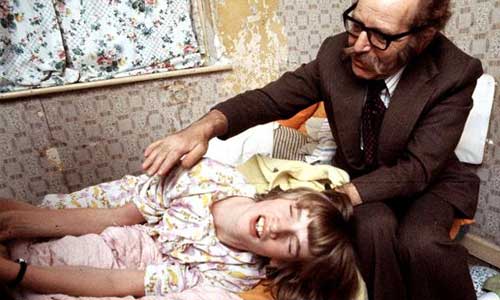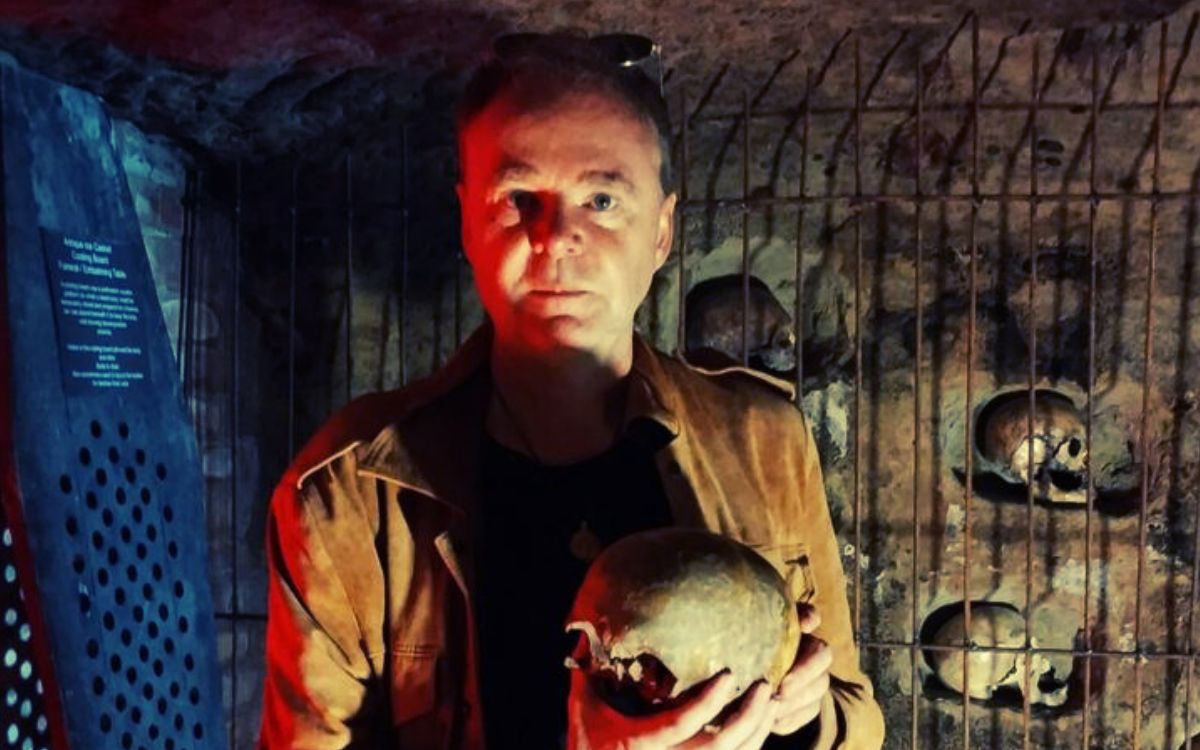John West tells Spooky Isles how growing up near the Enfield Poltergeist sparked his lifelong search for paranormal truth
When news of the Enfield Poltergeist broke in the late 1970s, it seemed as though the entire town was gripped by fear and fascination.
For one Enfield schoolboy, the story sparked a lifelong obsession that shaped his career as a writer, broadcaster and filmmaker. That boy was John West.
“I would have been about eight or nine at the time,” West remembers. “All the kids were talking about it in the playground — ‘Have you heard about the ghost in Green Street?’ It was on the TV news, in the papers, even on Nationwide. You couldn’t miss it.”
West didn’t know the Hodgson girls at the centre of the case — they went to another school — but he lived close enough to feel its impact.
His mother knew the local lollipop lady who later told newspapers she had seen young Janet Hodgson levitating at an upstairs window.
“My mum asked her about it directly, because she was sceptical. The lollipop lady just said, ‘I saw her floating up and down, flat as a board. You can’t fake that.’ After that, my mum was convinced,” West says.
From then on, whenever they walked past 284 Green Street, his mother would quicken her step. “She didn’t want to see it for herself, though maybe a part of her did.”
The connection was more than hearsay. West’s father worked for Enfield Council and was sent to the house some years later to clear blocked drains.
“His colleague swore he saw something levitate in the garden, dropped his tools and ran. My dad, being a practical man, just got on with the job. But he knew exactly whose house it was.”
For West, these encounters made the haunting real in a way that news reports could not. It was part of his own neighbourhood, shaping his childhood sense of what might lurk beyond the ordinary.

The Poltergeist Casebook
Over the years, West has turned that early fascination with ghosts and hauntings into serious research. This Christmas, his new book The Poltergeist Casebook will be published by ARIMA.
Part history, part investigation, it explores the world’s most famous poltergeist cases, from the 17th-century “Tedworth Drummer” to the Wesley family’s haunted rectory in Lincolnshire, and of course, Enfield itself.
The book features an introduction by Damon Wilson, son of the late Colin Wilson, whose Poltergeist! remains a definitive text. An afterword is provided by Alan Murdie of the Ghost Club and executor of the Guy Lyon Playfair estate. (Both Alan Murdie and Guy Lyon Playfair have both written about the Enfield Haunting for Spooky Isles.)
Playfair himself chronicled the Enfield case in his classic This House is Haunted, a book that West still regards as essential.
For West, The Poltergeist Casebook is an attempt to trace the patterns behind these strange events and ask the hardest question: what exactly is a poltergeist?

The Seven Stages of a Haunting
West describes what he calls the “seven stages” of a typical poltergeist outbreak.
“It often begins with little things: knocks, bangs, scratching in the walls. People think it’s pipes or mice. Then objects move, things disappear, and sometimes people see apparitions. Fires can start without cause.
“The energy often focuses on one person in the household, who may even be attacked. And then, just as suddenly, the whole thing fizzles out and life goes back to normal.”
This pattern, he says, repeats across centuries of recorded cases. Some dismiss the early disturbances as imagination or hoax, but the escalation is harder to explain away.
Beyond Adolescent Energy
For years, the standard explanation was that poltergeists were caused by the psychic energy of teenagers, especially girls going through puberty. West is not convinced.
“That theory doesn’t explain cases where people are dragged up stairs by their hair or when heavy objects levitate. Colin Wilson himself doubted it.
“I think it’s more likely that poltergeists are entities of some kind — ghosts, elementals, maybe even something from another dimension — that use human energy to manifest.”
He points to an alternative idea: when people die, their “higher self” moves on but their baser instincts remain behind, forming a kind of restless fragment.
“That could explain why poltergeists often seem angry, confused, even childish. They don’t know what they are. They linger until they fade away.”
Enfield and Beyond
Enfield remains the case that looms largest in his imagination.
“It divided the town. Some thought it was all a hoax, others were utterly convinced. I believe it was a genuine case, though like many hauntings it may have included exaggerations later on.
“That doesn’t erase the core truth—too many credible witnesses saw too much.”
But West is keen to remind readers that Enfield is part of a much wider story.
He examines the 18th-century Cock Lane haunting in London, once thought to be a prank but which he believes had something genuine at its core. He has visited the Epworth Rectory in Lincolnshire, home of the Wesley family, where unexplained knockings and ghostly activity were recorded long before Methodism was born.
“The point is, these things are not rare, and they are not confined to one type of person or place,” West says. “They happen across history and geography.”
A Mystery That Endures
After decades of study, West admits there is no final answer.
“We may not know until we ourselves cross over. Even Guy Lyon Playfair, who devoted his life to studying poltergeists, said as much to Colin Wilson, that we won’t know the truth until it’s our turn to pass on.”
For West, though, the search is the point.
“It’s about trying to understand what these things are telling us about life, death and whatever lies beyond. I don’t think we should dismiss them as tricks or hysteria. They are part of the human story.”
And for one Enfield schoolboy who grew up hearing tales of a girl levitating in a council house window, the story has never really ended.
It has simply grown into a lifetime of inquiry — now distilled into The Poltergeist Casebook, a work that began with whispers in a playground and may yet help illuminate one of the strangest mysteries of them all.
Read more about John West on his website.
Have you experienced poltergeist activity in your own home? Tell us your story in the comments below!


